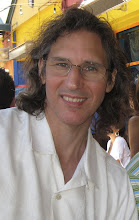From the “New York Herald,” July 31, 1861.
TROOPS BOUND FOR THE SEAT OF WAR - THE THIRTEENTH MASSACHUSETTS VOLUNTEERS EN ROUTE FOR THE SEAT OF WAR.
The
Thirteenth Regiment of Massachusetts volunteers, under command of
Colonel Leonard, arrived in this city yesterday en route to the seat of
war. The regiment, which was organized in a great measure in
the city
of Boston, was encamped for some time at Fort Independence, in Boston
harbor, where they were so well perfected in discipline that few
regiments can compete with them in drilling and manoeuvering.
They
struck their tents on Monday morning, and after a short parade in
Boston proceeded to this city by the Norwich & Worcester route,
and
arrived about eleven o’clock yesterday. They were met at the steamboat
wharf by a deputation of citizens, natives of Massachusetts wearing on
their breasts badges with the inscription “Sons of
Massachusetts.”
These badges, as also the banner carried by the “Sons,” were ornamented
with the coat-of-arms of the Bay State. The regiment then
took up
their line of march through Canal Street and Broadway to the City Hall
Park, where the men were dismissed for dinner in the barracks and “a
ramble about the city.”
Shortly after four o’clock the
regimental line was again formed, and the procession, preceded by the
escort of citizens, marched down Broadway and around Battery Place to
pier No. 1, where they embarked on board the steamboat “John Potter,”
for Amboy. Their reception was a most magnificent one, and the applause
of the populace was expressed at every step of the route in a continued
clapping of hands.
The Thirteenth Regiment is one of which
Massachusetts may well be proud. It is composed of a superior class of
men. In physical appearance, soldier-like bearing, and
martial
discipline, the regiment is perhaps unsurpassed. The members generally
belong to a higher social position than those composing most of our
regiments, and their enlistment had been a matter of pure patriotism,
many having left remunerative salaries and situations to go to the
war. The uniform of the regiment consists of a dark-blue
loose jacket
of flannel, light-blue cloth pants, and regulation cap. They are all
armed with the Enfield rifle.
Memoirs of Charles H. Roundy, Company F
(Charles Roundy's handwritten memoirs are in the collection of the Army Heritage and Education Center (AHEC) in Carlisle Pennsylvania.We leave Fort Independence
Eight weeks from the time we entered the fort we were ready
and
anxious to get away. We had drawn Uncle Sam’s uniforms and
guns
and equipments. We were armed with Enfield Rifles – the natty
battalion uniforms were discarded now and all the companies looked
alike and the eight weeks of hard work showed as we marched Company
front – 50 men in the front rank with the other 50- thirteen inches in
the rear, and each man struggling for a straight alignment – the
Companies reaching from Curb to Curb as we marched up State Street and
on to the State House, where Governor John A. Andrew talked to us like
a father to his sons, - gave us our Colors and bid us God Speed.
We went to the Worcester depot and after the
excitement of leave taking we left Boston and arrived at New London,
Conn. At midnight- took the steamer “John Brooks” for New York and were
allowed a short liberty in the city, then fell in and marched down
Broadway.
We had got rid of many things which we had thought
we could not do without, but we found we could do considerable more
trimming yet, and the process was kept up at every halt.
Marching company front down Broadway reaching from
curb to curb, the band playing “John Brown’s body lies” – every man
nerved to do his utmost to keep a straight line. The
multitude –
singing – cheering – and waving of flags made one continuous ovation
till we took train for Philadelphia – going via Havre de Grace (where
the whole train was run onto the ferry boat with out our leaving the
cars) and taken across the river.
How sweet those waiters in their quaker bonnets looked to us as they helped us to sandwiches and coffee – yes and pie – real pie.
Who of the 13th can ever forget their kindness?
PHILADELPHIA INQUIRER
July 31, 1861
LOCAL INTELLIGENCE
At Washington street wharf, at eleven o’clock
last night, the Thirteenth Massachusetts Regiment was
expected en route from Boston
to Washington.
It was doubtful, however, whether they would not
be taken to the Kensington depot, and marched from thence to the depot
at West Philadelphia, their final destination being with General Banks,
in Maryland.
The
regiment numbers one thousand men, well equipped for the war. They are
armed
with the Enfield rifled
musket. The uniform is neat and
substantial, consisting of dark blue jacket and cap, and light blue
pantaloons. The men are supplied with
everything needed on the field, ninety-five horses and twenty baggage
wagons
accompanying the regiment. The
conveniences for taking care of the wounded are unusually ample,
consisting of
one two-horse and eight one-horse ambulances, and two hospital
wagons. A peculiarity in connection with the horses
brought by the regiment is, that they are nearly all grey – designedly
chosen. The nucleus of the regiment was
the Boston City Guard – a rifle corps, consisting of four
companies. Of the remaining companies two came from
Marlboro’, one from Stoneham,
(nearly all shoemakers,) one from Westborough, one from Roxbury, and
the other
from Natick (shoemakers). The
men, it is said, as a class, are sober,
intelligent, earnest and determined. (The poster
shows the
Cooper Shop Volunteer Refreshment Saloon, 1862, 1009 Otsego Street, Philadelphia, where
soldiers, including the 13th Mass, at this early stage of the war,
could find food and refreshments. The Cooper Shop grew and
continued the service throughout the war.